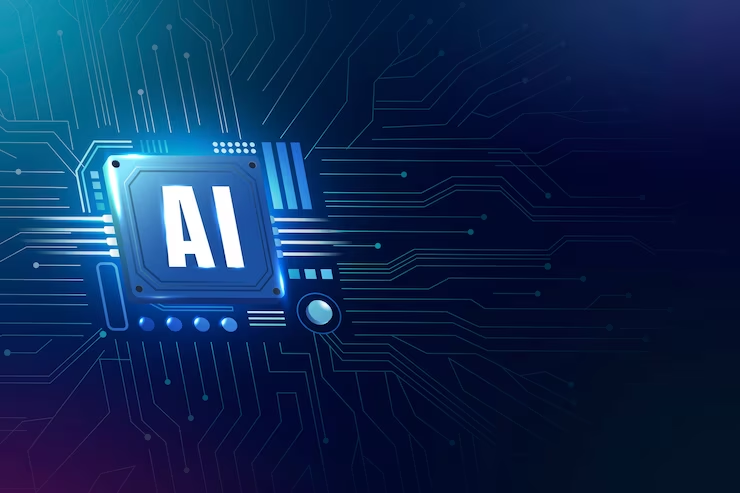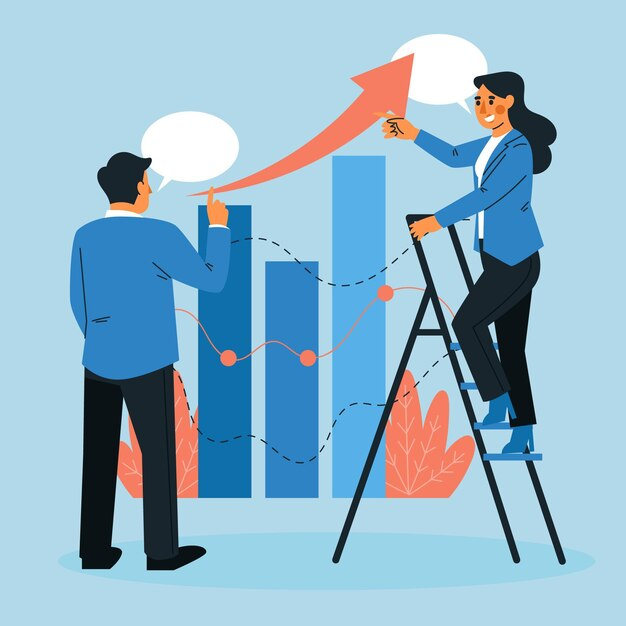Published at Artificial Intelligence by Sael

Best Practices for Seamless AI Integration in Your Business
Published at Artificial Intelligence by Sael
In today's fast-paced business world, using artificial intelligence (AI) is necessary to stay ahead of the competition and spark new ideas. 35% of businesses have adopted AI. AI will contribute $15.7 trillion to the global economy by 2030. AI integration into business processes can lead to higher productivity, better decision-making, and never-seen growth.
However, for many organizations, the idea of AI integration may seem scary. This blog explains the best practices for effectively implementing AI into your business to simplify the process.
Table of Contents
1. Eight Best Practices for Seamless AI Integration in Your Business
1.1. Unlocking your business objectives
1.2. Understand AI fundamentals and connect with AI professionals
1.3. Data Readiness and Quality
1.4. Select the right AI tools
1.5. Implementing continuous learning mechanisms
1.6. Monitoring and Evaluation
1.7. Ensuring ethical AI practices
1.8. Measuring ROI and Communicating Success
1. Eight Best Practices for Seamless AI Integration in Your Business
1.1. Unlocking your business objectives
Every business faces different problems and has different chances to succeed. Having a clear idea of your business goals is essential before you start integrating AI.

Start by integrating AI into your business strategy. Explain how AI may help organizations achieve goals. Find how AI can improve productivity, innovation, or customer satisfaction to align with your business's long-term goals.
Analyze your business processes to find issues. These may include operational inefficiencies and customer service bottlenecks. Knowing these pain areas helps tailor AI solutions to individual needs, making integration more targeted and successful.
Set measurable AI integration goals to avoid confusion. Quantitative indicators let you objectively evaluate AI's impact on your firm, such as processing speeds, accuracy, and client engagement.
1.2. Understand AI fundamentals and connect with AI professionals
To complete the integration process, it is essential to understand the basic AI concepts. With this information, companies can clearly explain their needs, work with AI experts, and make intelligent choices to help them get the most out of AI in their operations.

Evaluate your existing technology infrastructure to identify gaps and assess compatibility with AI solutions. Ensure your systems can handle the merging without slowing down or risking your security. Make a plan with your IT team that lists all the upgrades and changes needed for easy AI integration.
1.3. Data Readiness and Quality
AI relies on data a lot. As a result of lousy Quality or not enough data, AI can get wrong ideas and perform poorly. Do a complete check of the data to ensure it is clean, correct, and helpful for the goals.

To understand data quality, four things are essential:
- Accuracy:
Data accuracy counts. Due to data inaccuracies, AI algorithms may produce incorrect predictions and conclusions. Fix dataset errors for dependable AI-driven insights.
- Completeness:
Robust AI models need complete datasets. Missing or partial data can influence the model's pattern recognition. To improve completeness, impute or augment missing data.
- Consistency:
Data consistency ensures source and period uniformity. Data consistency concerns may mislead AI models, causing erroneous outputs. Standardise and validate data to ensure dataset consistency.
- Relevance:
Relevant data matches AI integration goals. Model efficiency requires removing extraneous data. Set clear relevance parameters for your AI applications and acquire valuable data.
To improve the data, use methods like cleaning, normalizing, and feature engineering that are part of data pre-processing. Robust data collection and storage methods should be used to ensure data is ready for AI training and release.
1.4. Select the right AI tools
There are many AI tools and technologies available, which can make it hard to choose the right ones for a business.

A tool might be well-known, but that doesn't mean it's right for your business. Do your homework, read reviews, and talk to people in the field. Choose AI tools that can be easily changed to fit the needs of your business.
AI tools are available for businesses in a wide range of fields. A company's industry, business objectives, and particular requirements frequently influence the selection of AI tools.
These are some commonly used AI tools that can be used for different business tasks:
- TensorFlow
- PyTorch
- Amazon SageMaker
- Salesforce Einstein
- Google Cloud AI Platform, etc.
1.5. Implementing continuous learning mechanisms
It's not as easy as "set it and forget it" when you use AI tools. It is essential to have ongoing training and assistance. It is important to make sure that all members of your team are familiar with the proper usage of these tools. Regular workshops, training events, and demos are beneficial. Most AI tools, especially machine learning models, need to be trained with new data all the time to get better and change with the times.

Let us analyze the crucial points that have to be given importance:
- Setting up a culture of lifelong learning
- Setting up vital training programs
- Taking Advantage of Online Courses and Certification
- Encouraging people to work together and share their knowledge
- Monitoring Industry Trends and Best Practises
- Setting up sandboxes for testing
- Setting up Key Performance Indicators (KPIs) to keep getting better
- Working with experts and consultants from outside the company
In the ever-changing world of AI integration, it is essential to set up ways for systems to keep learning.
1.6. Monitoring and Evaluation
Monitoring and evaluating are essential parts of the best practices for integrating AI into your business without problems. This step measures AI system performance, impact, and alignment with corporate goals.

Find the KPIs that support your AI ambitions. These include response times, accuracy, user satisfaction, and efficiency gains. Ensure you have short-term and long-term KPIs to monitor AI systems immediately and over time.
Establish real-time monitoring of your AI systems to monitor their performance. Data must be collected, analyzed, and visualized constantly to detect changes and anomalies quickly. Real-time tracking fixes issues rapidly and ensures AI apps work.
Review and audit AI models and processes regularly. This includes reviewing data quality, program performance, and strategies to improve. AI models need regular reviews to stay helpful and correct, significantly when business conditions change.
Review user feedback to determine satisfaction and areas for improvement. See how real people utilize AI systems and if the responses fit their demands. User feedback helps improve AI apps and ensure they perform as intended.
Monitor how successfully AI systems meet new business needs. Businesses change. Thus, AI apps may lose value. AI should adapt to new technology, market situations, and goals.
Monitoring and evaluating are essential parts of the process of AI integration.
1.7. Ensuring ethical AI practices
Ethics are crucial to responsibly and effectively integrating AI into business operations. It's the moral thing to do, but it also builds trust, lowers risks, and ensures AI project success.

AI often handles private data. User privacy is crucial to employing AI ethically and respecting data protection rules. Encrypt and anonymize user data to safeguard it. Let people know how their data will be collected, utilized, and stored and get their consent.
External ethical AI experts help your organization handle complex ethical concerns. Seek advice from ethicists, privacy specialists, and other AI ethics experts. Use outside experts to ensure your AI systems are sound.
Clear ethical standards assist people in making moral decisions throughout AI creation and implementation. Make and follow ethics standards that describe AI use principles. Consider using industry-standard models like the IEEE Ethically Aligned Design or AI Ethics Guidelines.
Ethical AI use requires a multifaceted strategy. This builds trust and positions your organization as an AI leader.
1.8. Measuring ROI and Communicating Success
To prove that artificial intelligence (AI) adds value to your organization, quantify its ROI and explain how well it integrates with other systems. This best practice measures success, fosters trust, generates stakeholder buy-in, and promotes innovation.

Learn how integrating AI will affect operations and economics to discover the benefits and decide if the investment is worth it. Establish mechanisms to quantify financial improvements like fewer expenses, more revenue, or better resource use. Check the operational effect by measuring productivity, accuracy, and time efficiency.
Setting a baseline allows meaningful comparisons before and after AI installation. Gather key metrics before implementing AI to set a standard for future adjustments. Start using this standard to measure AI project effects.
You can determine if AI integration is profitable and effective by evaluating costs and benefits. The benefits of employing AI should be weighed against the expenses of research, training, and maintenance. Check if AI advantages justify the cost.
Sharing success stories about adopting AI increases support and excitement inside the company. Show how AI has enhanced corporate operations using case studies, tips, and success stories. Communicate internally to keep everyone informed.
Changing methods depending on results ensures that AI integration meets business needs. Return on investment might help you improve your AI strategies. This adaptable strategy provides utility and improvement.
Providing detailed reports to stakeholders enhances transparency and informs everyone about AI integration's effects. Report AI project outcomes, metrics, and achievements in detail. Make these documents meet different groups' demands.
Measuring ROI and communicating success are integral components of the AI integration lifecycle.
2. Conclusion
In conclusion, achieving seamless AI integration in your business requires a strategic approach encompassing various vital practices.
Unlocking your business objectives sets the foundation for AI alignment, emphasizing the need to understand AI fundamentals and collaborate with AI professionals. Data readiness and Quality are pivotal in ensuring that the foundation of AI implementation is solid and reliable.
Selecting the right AI tools is crucial for the success of the integration while implementing continuous learning mechanisms guarantees adaptability and improvement. Monitoring and evaluation processes help track AI performance, ensuring that it aligns with business goals.
Ethical AI practices should be ingrained in every step to maintain transparency and accountability. Measuring ROI and communicating success is integral for showcasing the tangible benefits of AI integration to stakeholders. In essence, by following these best practices, businesses can seamlessly integrate AI and optimize its potential for long-term success.





